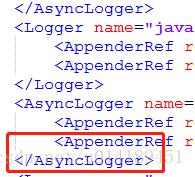ByteBuffer.asCharBuffer打印字符串乱码

背景
下面代码会直接输出乱码。原因是:getBytes需要指定字符编码
ByteBuffer byteBuffer = ByteBuffer.wrap("开源中国".getBytes());CharBuffer buffer = byteBuffer.asCharBuffer();
System.out.println(buffer.toString());
修改后就能符合预期:
ByteBuffer byteBuffer = ByteBuffer.wrap("开源中国".getBytes(StandardCharsets.UTF_16));CharBuffer buffer = byteBuffer.asCharBuffer();
System.out.println(buffer.toString());
原因
字符编码和编码的方式不一致导致的。
getBytes 其实就是把字符串编码按照默认的UTF-8进行编码称为字节数组(看源码可知).
byteBuffer.asCharBuffer()也就是转为UTF-8的CharBuffer。JAVA内部使用的是UTF-16
下面会证明:
ByteBuffer byteBuffer = ByteBuffer.wrap("开源中国".getBytes());System.out.println(byteBuffer.limit()); // 12 每个字符3字节
// 把 ByteBuffer 使用UTF-8解码为UTF-16的CharBuffer然后toString输出
System.out.println(StandardCharsets.UTF_8.decode(byteBuffer).toString()); // 结果能正常输出
byteBuffer.rewind();
CharBuffer buffer = byteBuffer.asCharBuffer();
System.out.println(buffer.toString());
小结
JAVA要输出CharBuffer或者char数组,会直接认为是UTF-16编码来获取对应的代码点,最终找到映射的字符
String.getBytes:使用默认编码UTF-8(Windows会不一样)进行编码为对应字节
以上是 ByteBuffer.asCharBuffer打印字符串乱码 的全部内容, 来源链接: utcz.com/z/516245.html





